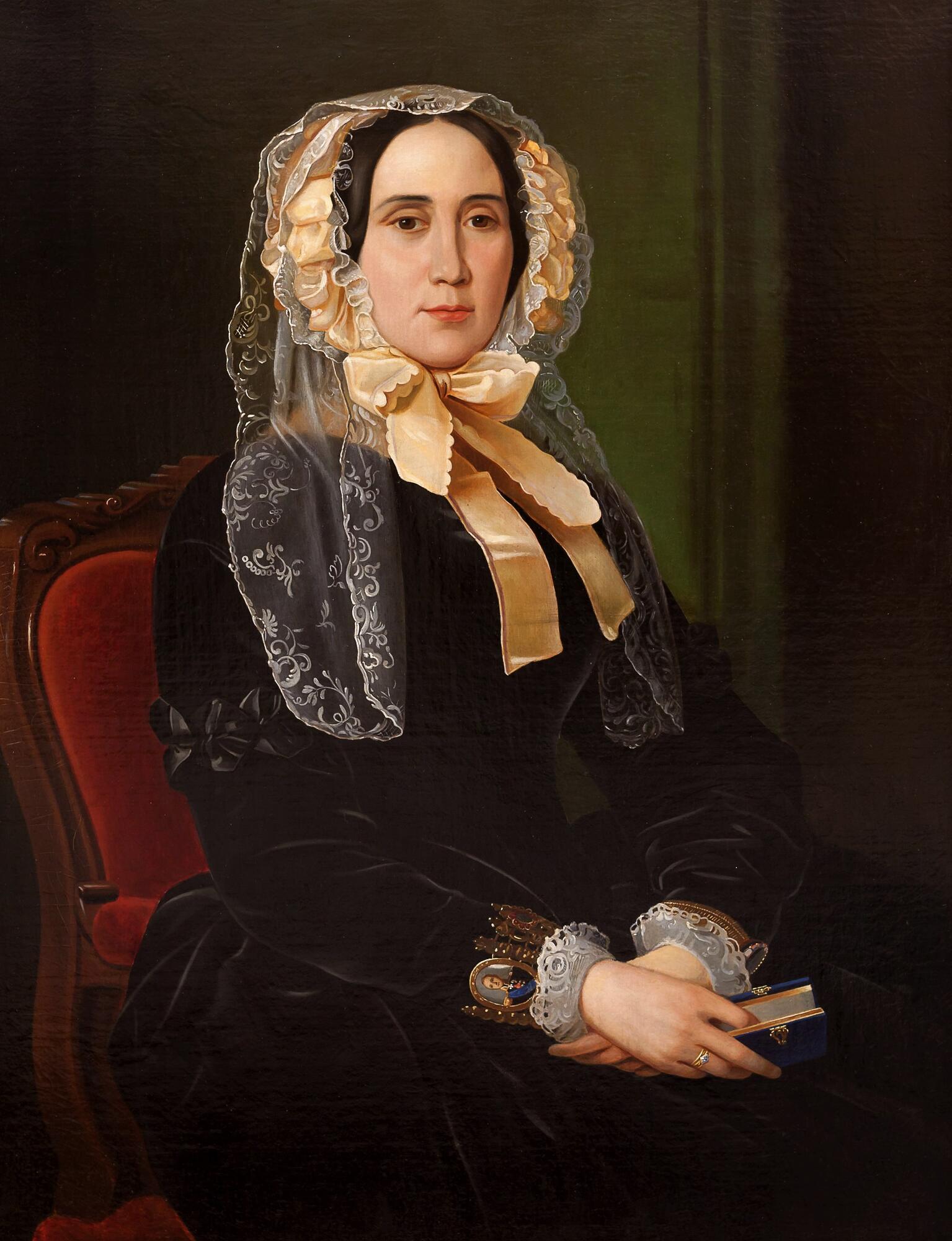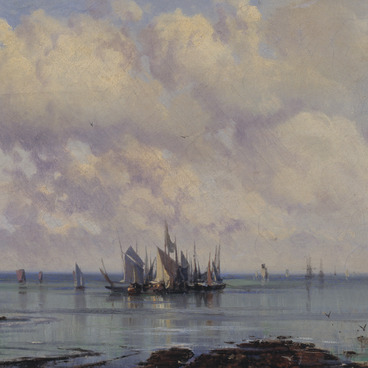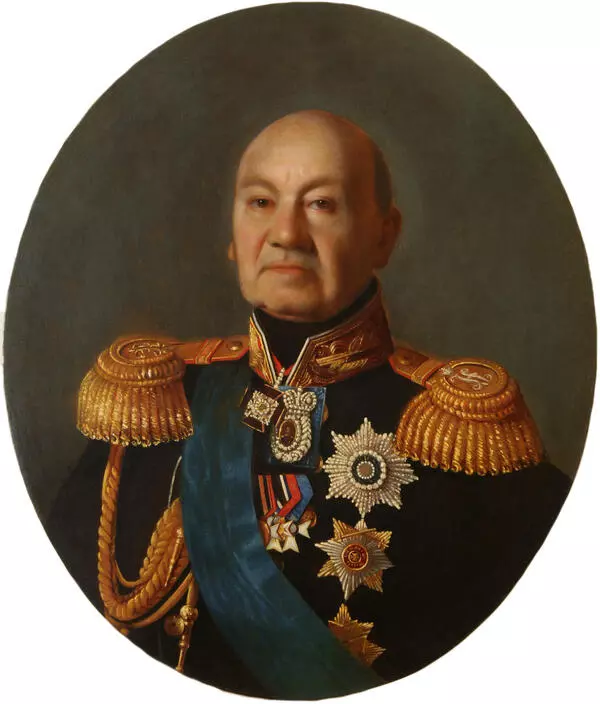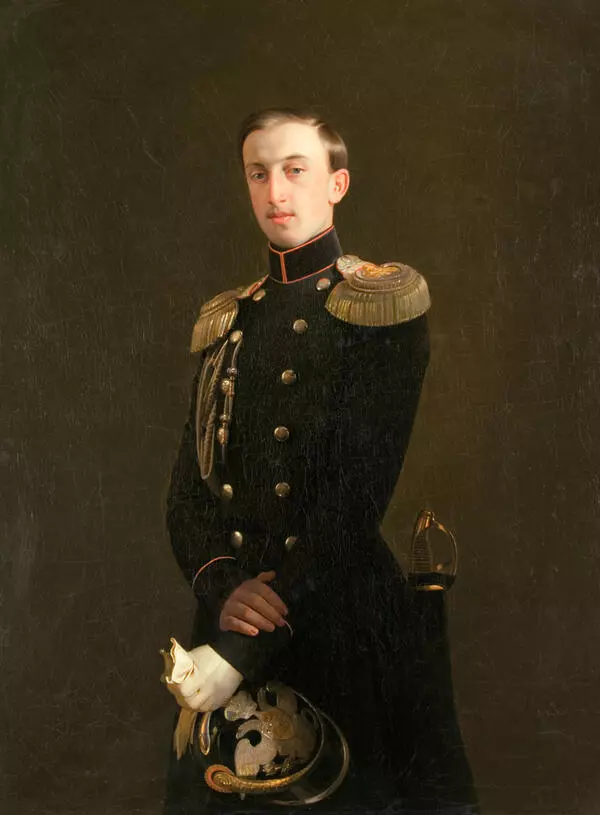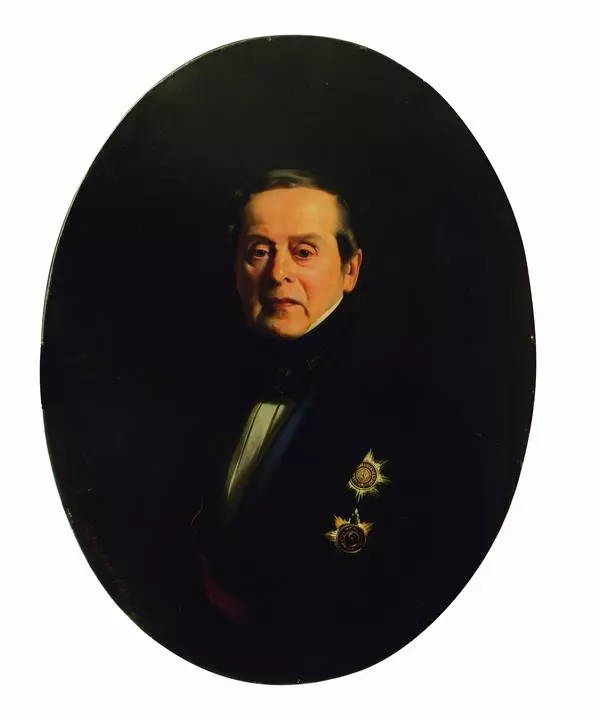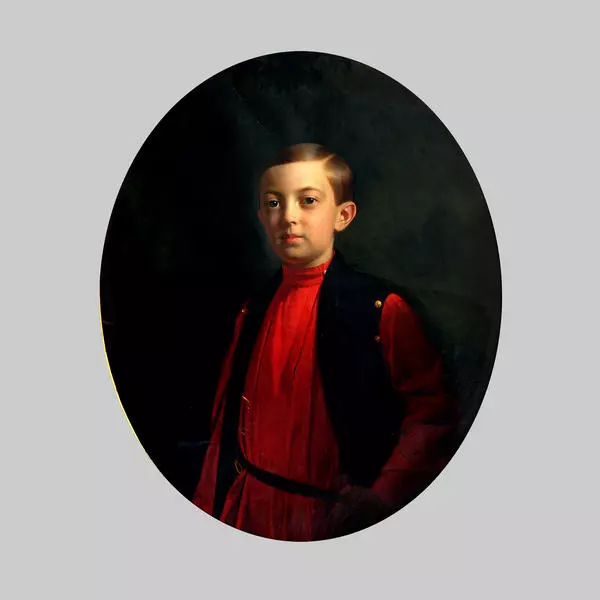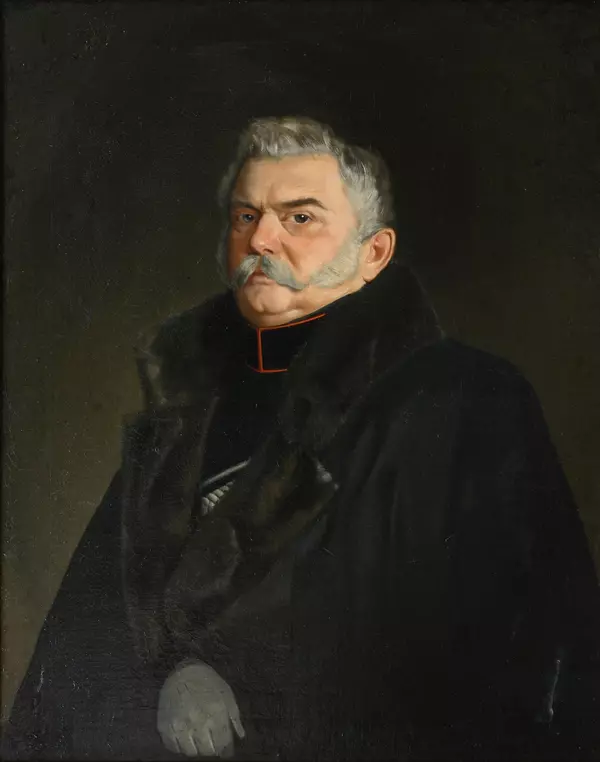Sergey Zaryanko was born in 1818 into the family of a serf peasant. After his father received his freedom, they moved to Saint Petersburg. The oncoming artist entered the Russian Academy of Arts where he studied under Alexey Venetsianov and Maksim Vorobyov.
In the middle of the 19th century, Zaryanko became quite a famous artist and began to receive numerous orders for portraits. The models for his paintings were political figures and officials, ministers and generals, aristocrats and merchants, artists and scientists, travelers and industrialists. In 1866, the artist even received the highest order for portraits for the Romanov Gallery of the Small Hermitage.
‘Portrait of Julia Greig’ belongs to this productive period of the artist’s work. Zaryanko depicted Julia Greig, née Stalinskaya, the wife of Admiral Aleksey Greig, a member of the State Council.
Zaryanko painted the model in a black dress against a dark background, highlighting only her hands and face. The artist sought to accurately convey the effect of lighting and the sparkle of the model’s eyes, he also carefully worked out the details and accessories. He meticulously and realistically painted materials of different textures: velvet, lace, leather, metal, and satin.
Zaryanko adhered to the principle of the most authentic transfer of all depicted objects and demanded the same from his students, instilling in them a ‘predilection for nature’. He was a teacher at the Alexander Orphan Institute, the Moscow Palace School of Architecture, Moscow School of Painting, Sculpture and Architecture. His students were among leading Moscow genre artists and portraitists of the 1860–1870s: Vladimir Makovskiy, Vasily Perov, Vasili Pukirev, Leonid Solomatkin, Illarion Pryanishnikov.
For almost 50 years, ‘Portrait of Julia Greig’ was a part of the exhibition of the Volgograd Museum of Fine Arts named after I. I. Mashkov. However, in recent years, due to its condition, the work was not exhibited to the public. To save the work, the employees of the State Research Institute of Restoration conducted preformed a great work on the picture. The experts cleaned the areas with darkened toning of the previous restoration, areas of decay of varnish, as well as removed the dust, stains and splashes.
In the middle of the 19th century, Zaryanko became quite a famous artist and began to receive numerous orders for portraits. The models for his paintings were political figures and officials, ministers and generals, aristocrats and merchants, artists and scientists, travelers and industrialists. In 1866, the artist even received the highest order for portraits for the Romanov Gallery of the Small Hermitage.
‘Portrait of Julia Greig’ belongs to this productive period of the artist’s work. Zaryanko depicted Julia Greig, née Stalinskaya, the wife of Admiral Aleksey Greig, a member of the State Council.
Zaryanko painted the model in a black dress against a dark background, highlighting only her hands and face. The artist sought to accurately convey the effect of lighting and the sparkle of the model’s eyes, he also carefully worked out the details and accessories. He meticulously and realistically painted materials of different textures: velvet, lace, leather, metal, and satin.
Zaryanko adhered to the principle of the most authentic transfer of all depicted objects and demanded the same from his students, instilling in them a ‘predilection for nature’. He was a teacher at the Alexander Orphan Institute, the Moscow Palace School of Architecture, Moscow School of Painting, Sculpture and Architecture. His students were among leading Moscow genre artists and portraitists of the 1860–1870s: Vladimir Makovskiy, Vasily Perov, Vasili Pukirev, Leonid Solomatkin, Illarion Pryanishnikov.
For almost 50 years, ‘Portrait of Julia Greig’ was a part of the exhibition of the Volgograd Museum of Fine Arts named after I. I. Mashkov. However, in recent years, due to its condition, the work was not exhibited to the public. To save the work, the employees of the State Research Institute of Restoration conducted preformed a great work on the picture. The experts cleaned the areas with darkened toning of the previous restoration, areas of decay of varnish, as well as removed the dust, stains and splashes.
